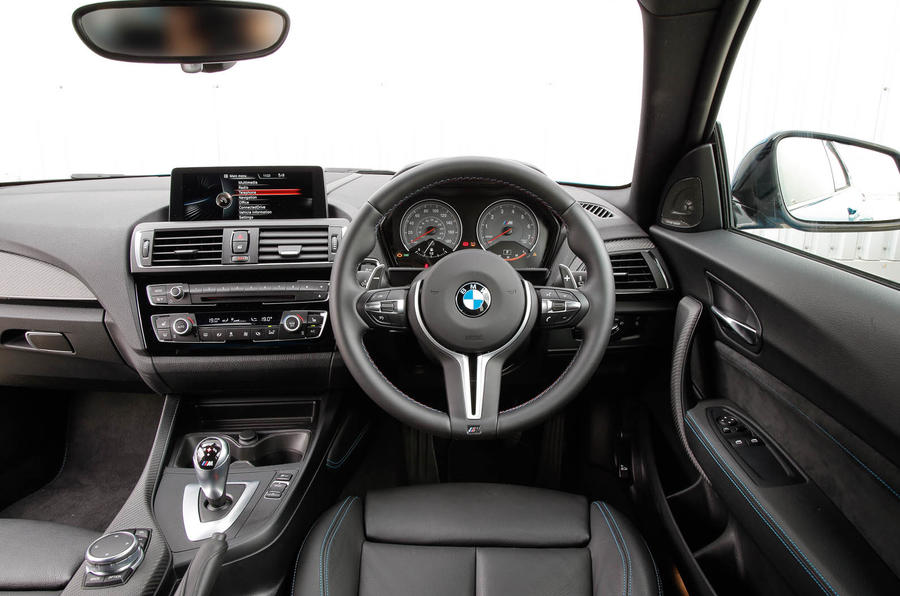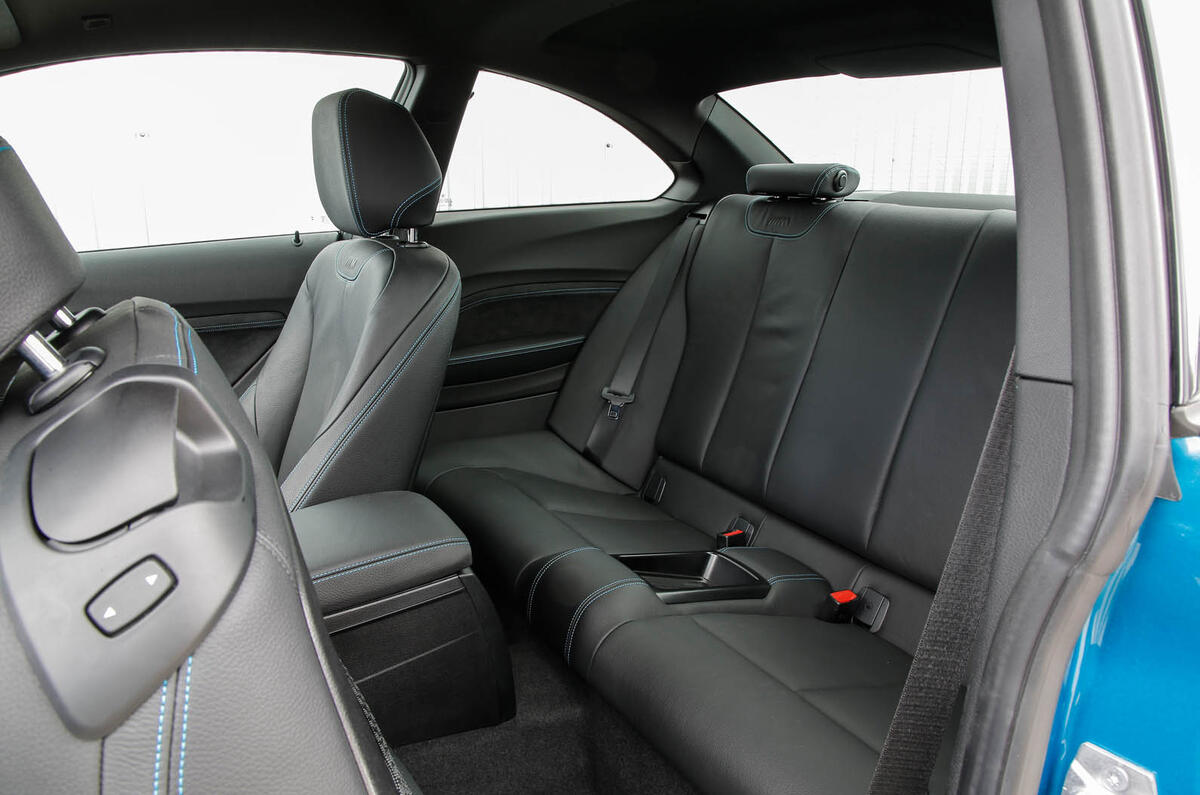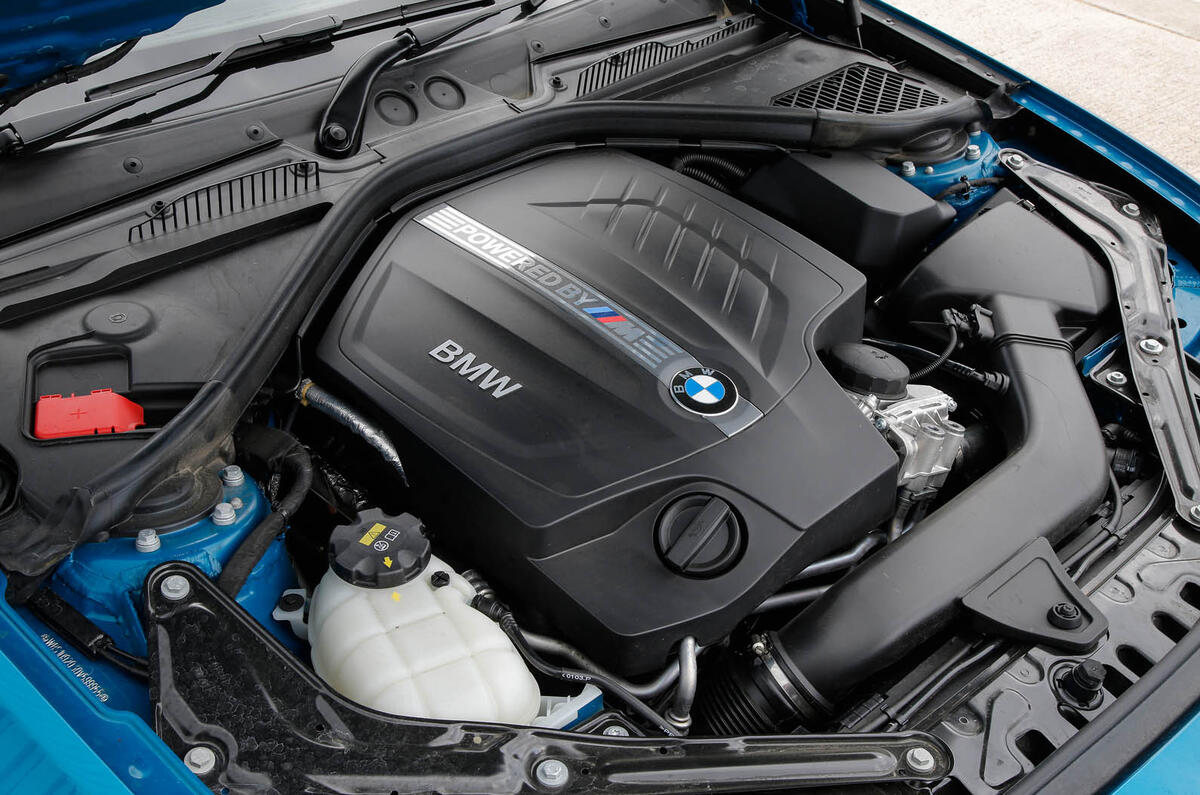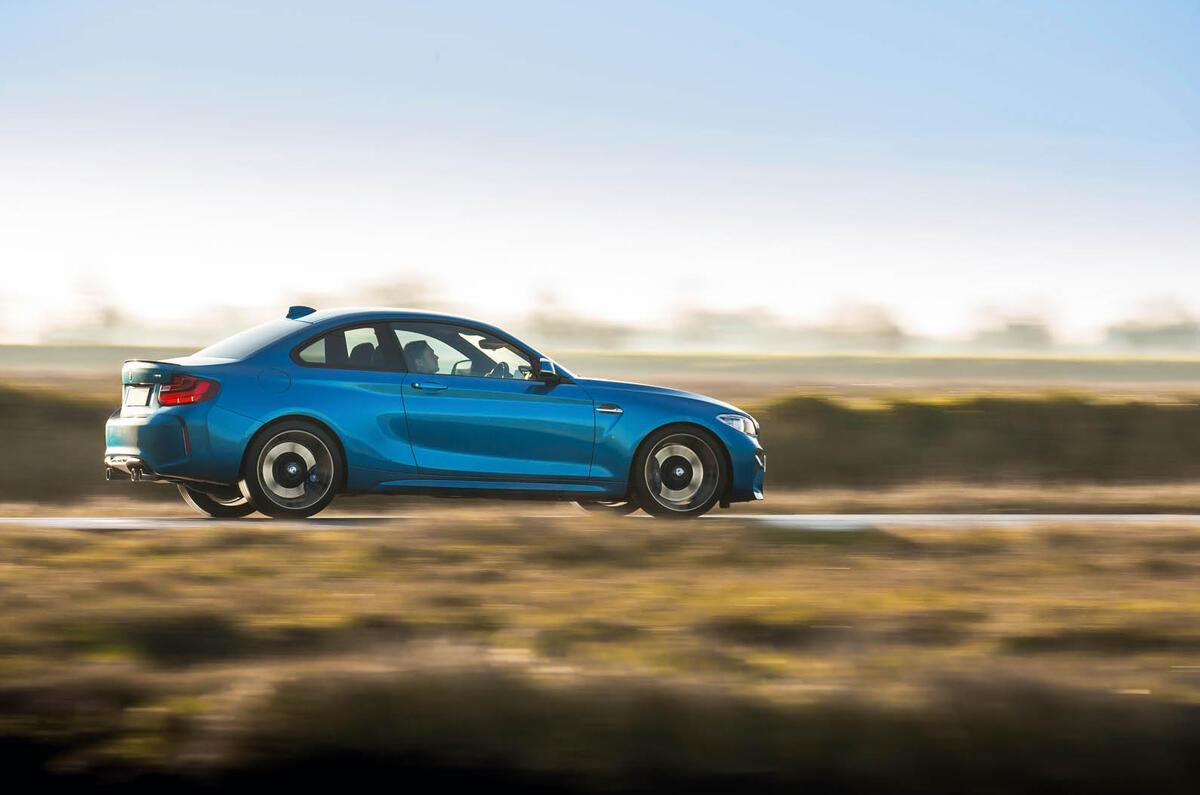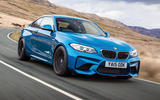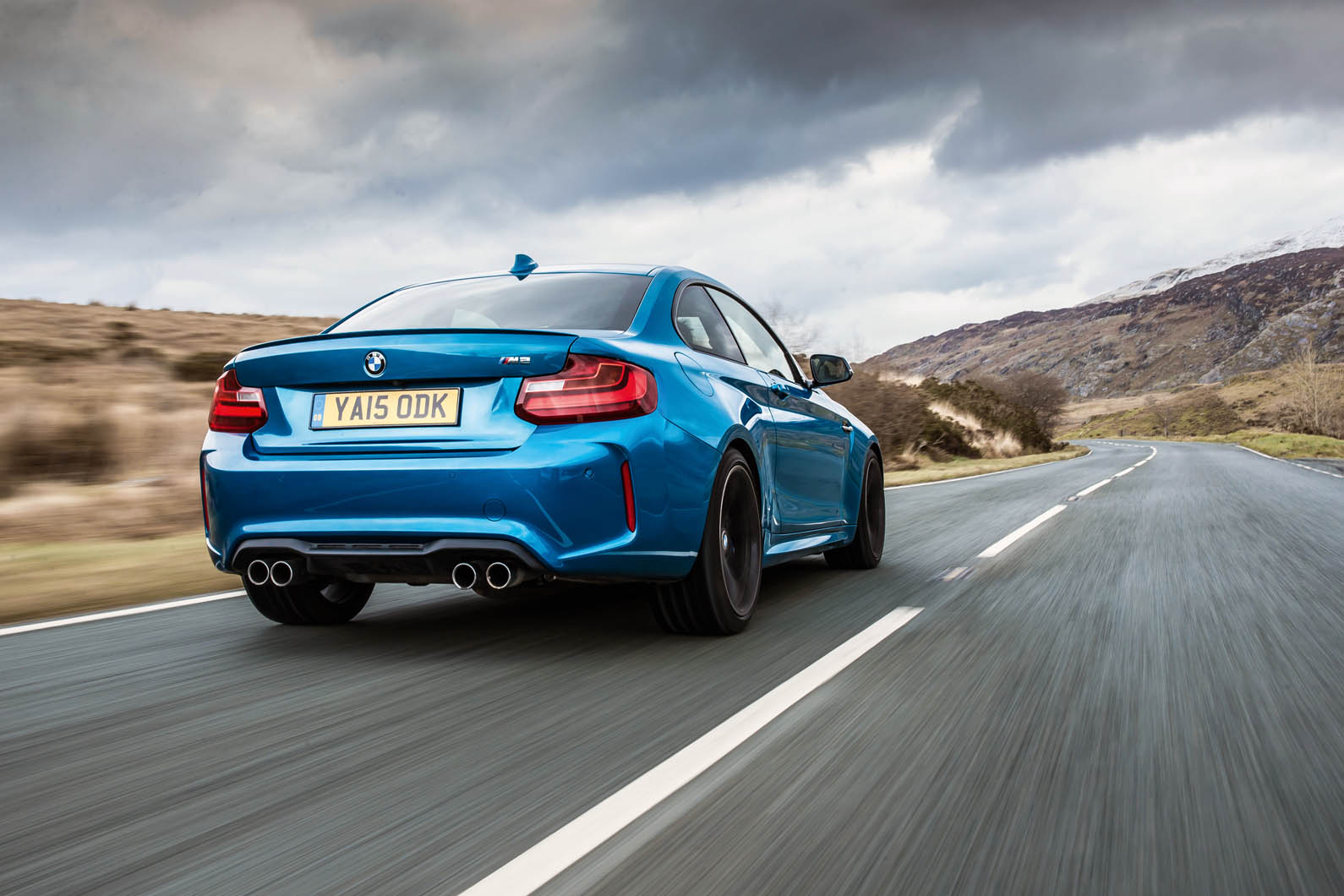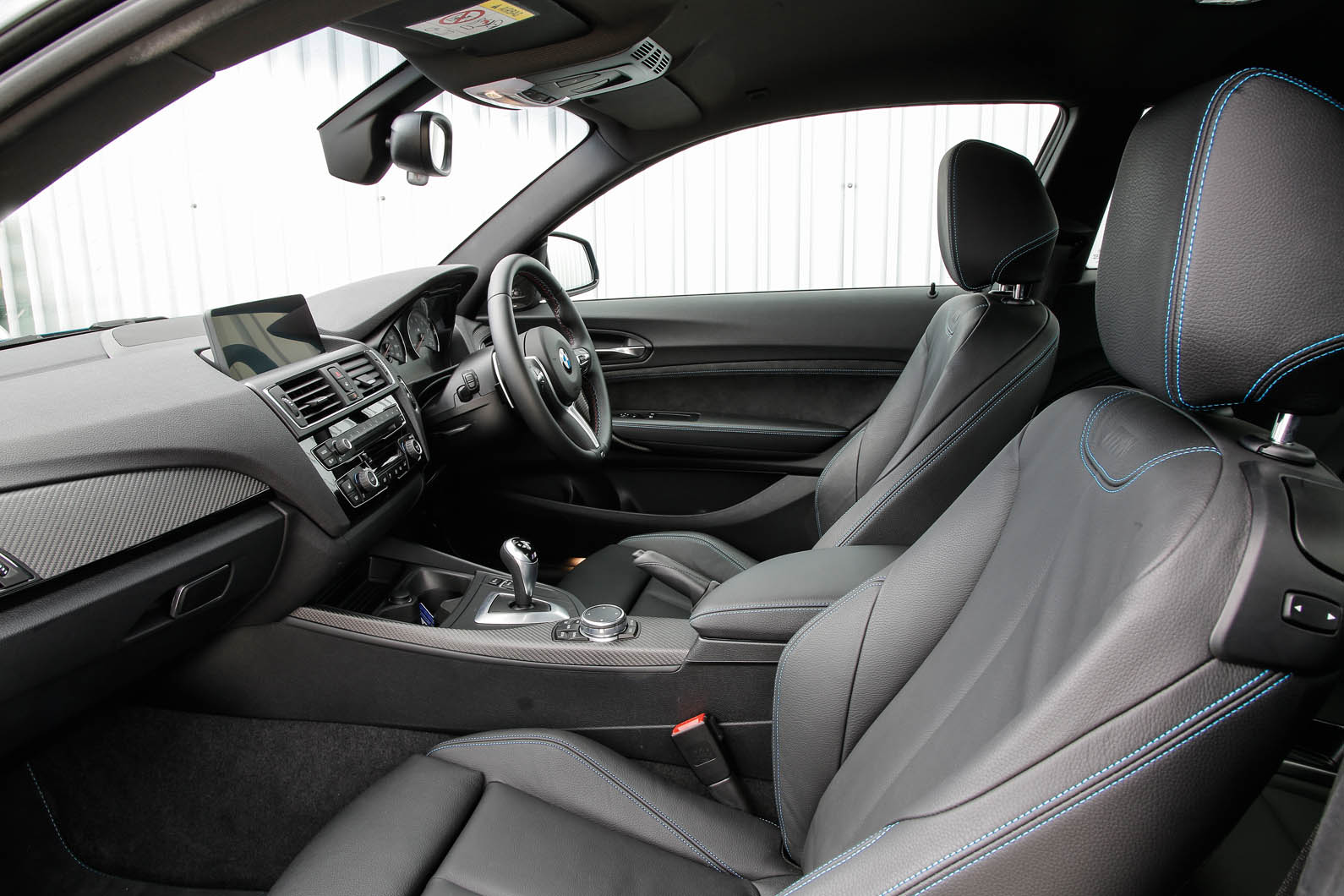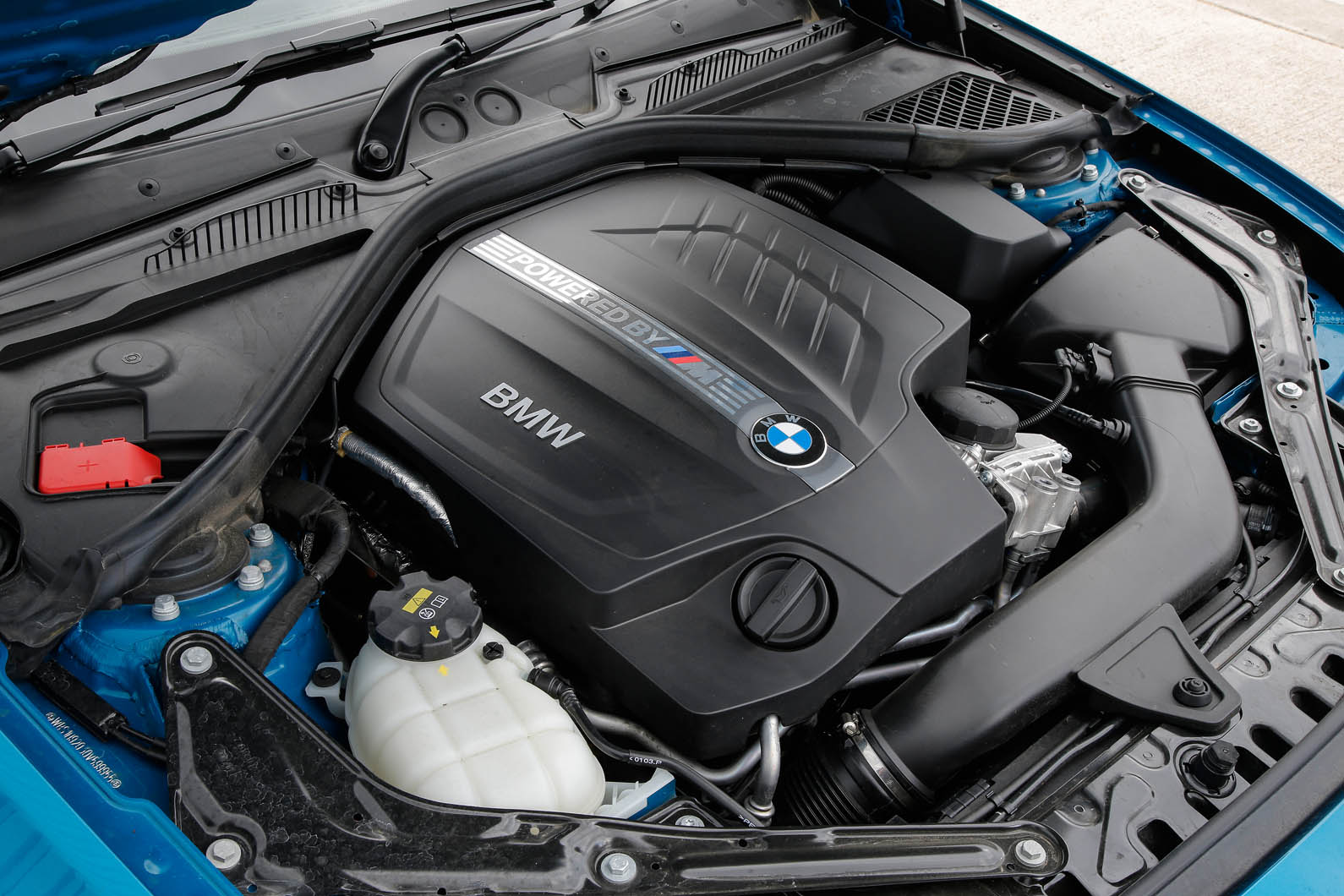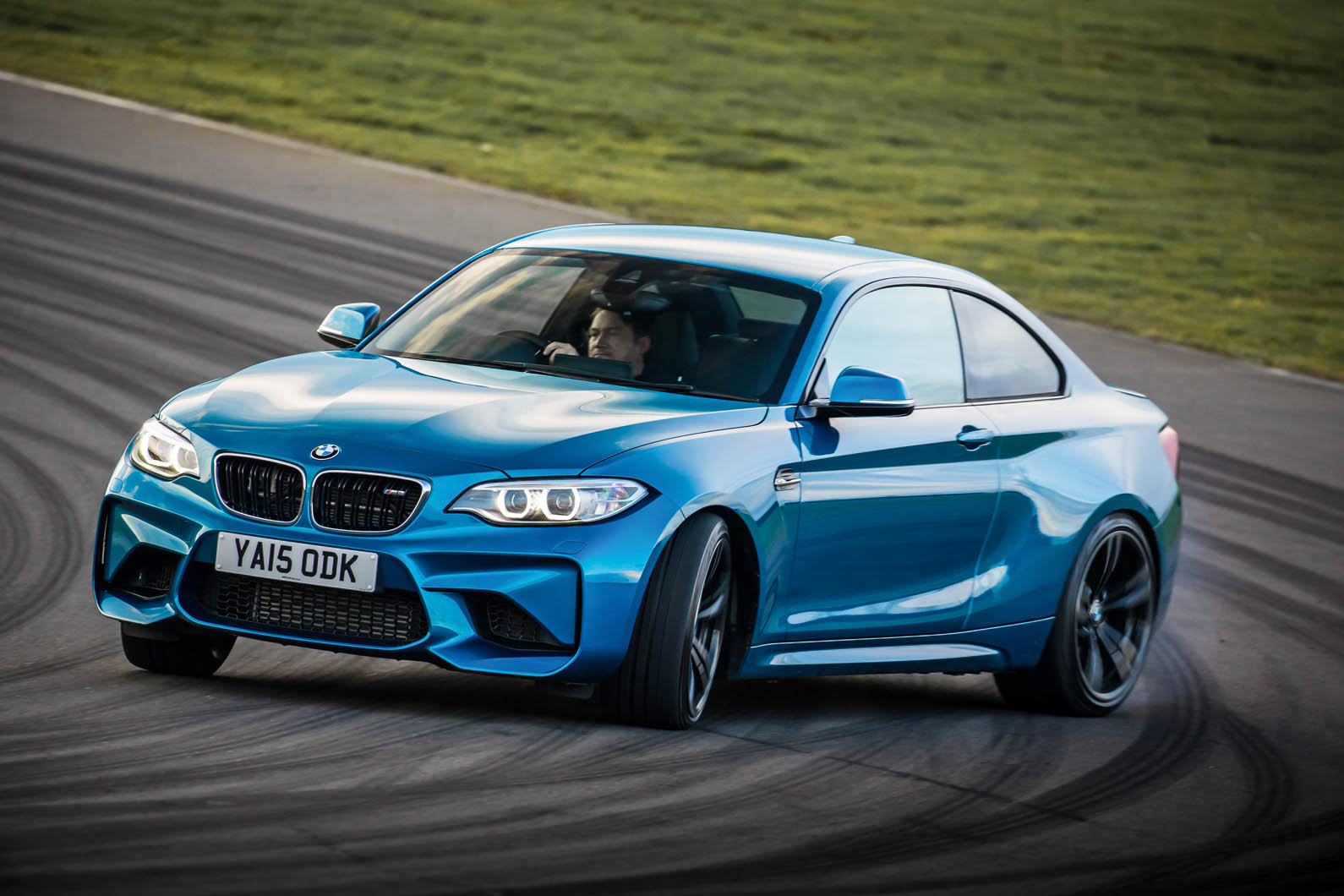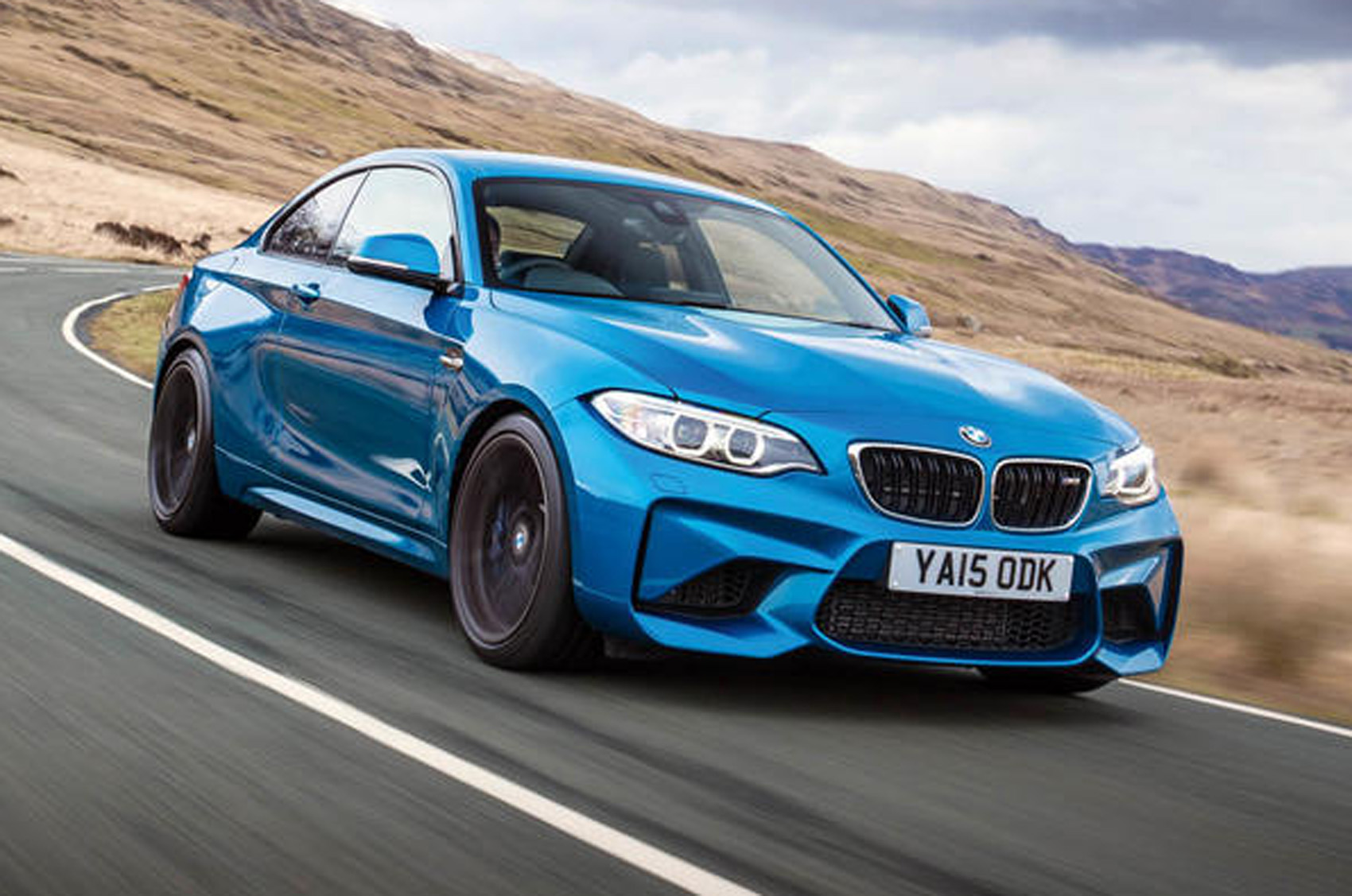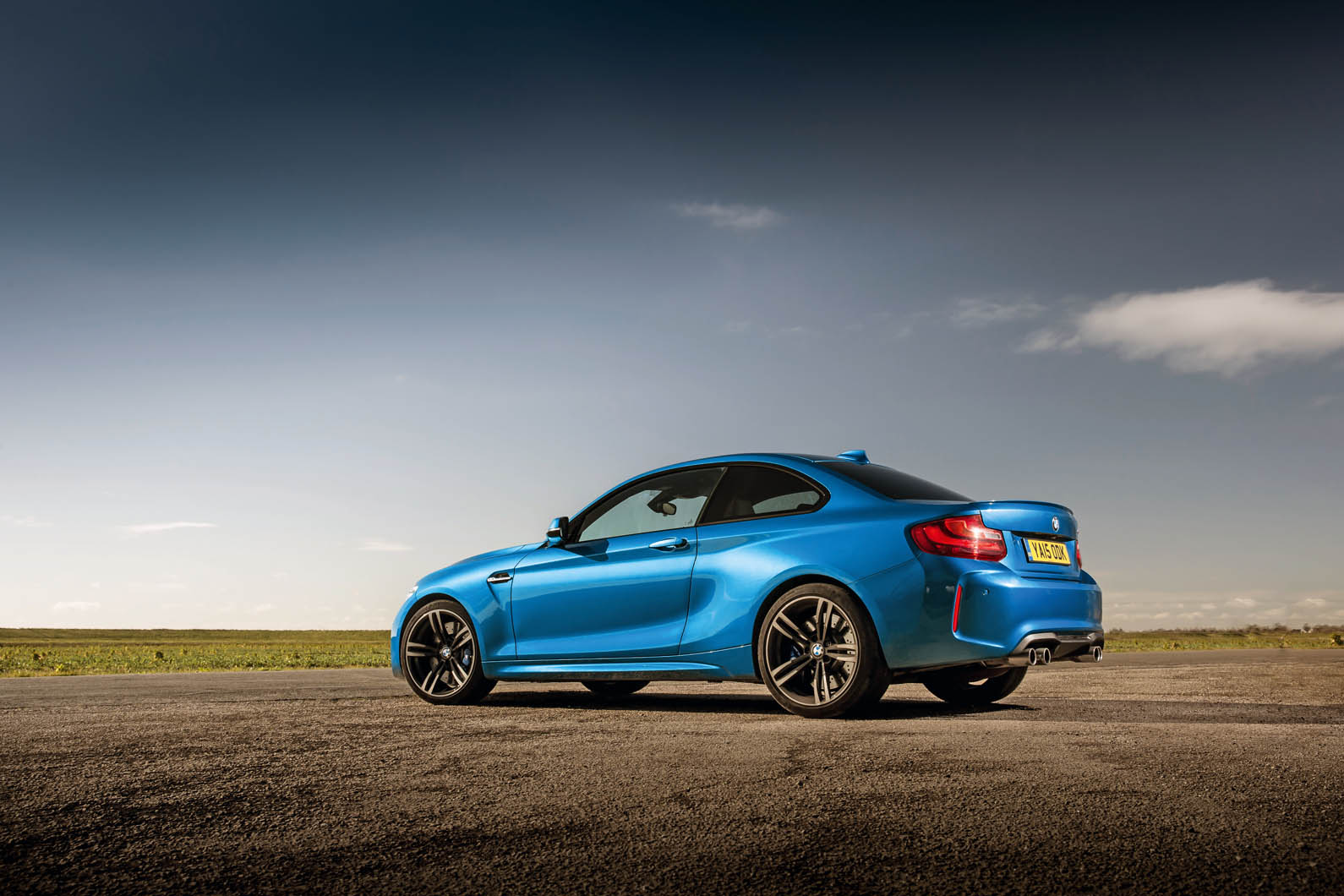Assessing the 1M’s interior five years ago, we questioned the legitimacy of basing a £40k sports car on a much more modestly priced family hatch – and the same argument applies here.
The BMW 2 Series may have earned its coupé spurs, but the cabin – or the dash, at least – is BMW 1 Series architecture designed to turn a profit in a £21k entry-level model.
An M-specific spruce of dials, needles and logos does not lift the M2’s ambience significantly above that level, meaning the current Audi TT and the Porsche 718 Cayman are comfortably a class apart. Although a recent facelift has improved the appearance of the exterior and the fitted the M2 with the latest iDrive infotainment offering, little has been drastically changed to this small M car.
Still, the benefits of the 2 Series platform are obvious enough. The longer you spend in the flagship, the more you appreciate just how practical the car actually is – particularly in comparison with the two-seat Porsche.
Even the four-seat TT is distinctly less habitable in the rear than the M2, which manages to accommodate two additional adults without immediately triggering claustrophobia. It also comes with a capacious 390-litre boot and the ability to fold the rear seatbacks flat, which ought to be music to the ears of anyone who has tried to fit a week’s shopping into a 718.
The M2 does a decent job of catering for the driver, too. You sit slightly higher than in the Porsche, but on reasonably supportive leather sports seats and with the very fine M-specific steering wheel (also in leather) in front of you.
The driving position is redolent of the M4’s, and while the removal of 10kg worth of sound deadening might have made the model significantly louder than the M240i, that isn’t necessarily a bad thing, as we’re about to find out.
As for standard equipment, the M2 is reasonably well equipped - with 19in black alloys shod in mixed tyres, an active differential, a beefy bodykit, quad-exhaust system, LED headlights, rear spoiler and M-tuned braking system and suspension fitted as standard. Inside there is a black Dakota leather upholstery, dual-zone climate control, interior LED lighting and BMW's brilliant iDrive infotainment system complete with a 8.8in touchscreen display, sat nav, DAB radio, Bluetooth and USB connectivity, and BMW's online services.
The M2 's Professional Navigation system and Professional Media package comes with desirable iDrive niceties such as an 8.8in display and the exceptionally good Real Time Traffic Information. BMW Online Services are part of the deal, but the getting Apple CarPlay requires a tick in an option box, as does access to online entertainment and wifi hotspot preparation - setting you back £235, with the other two options don't cost any extra.
That’s desirable, although the iDrive’s connection to a smartphone is generally faultless and therefore easily capable of supporting Spotify.
With BMW ConnectedDrive, the M2 offers a range of niche-targeted apps, including the M Laptimer and a GoPro video app for owners keen to festoon their car with camera mounts.














